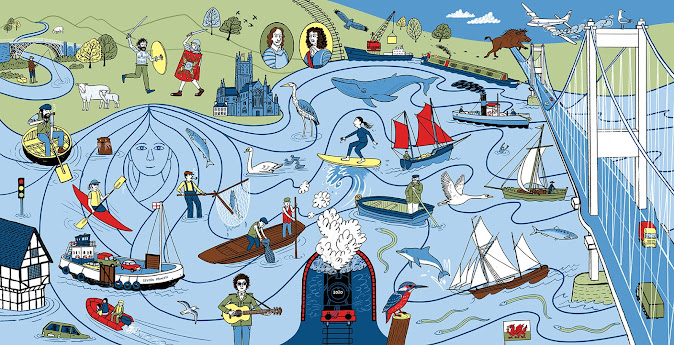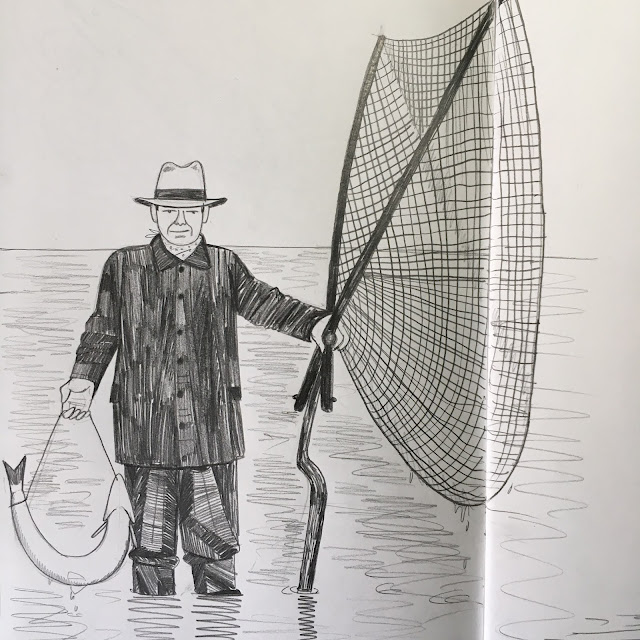Harry the Coracle Man

These images are based on the account of Harry Rogers, a man who lived on the banks of the River Severn in a house he built himself. There he made coracles and expertly navigated the river in this spherical craft to salvage whatever the water presented. The coracle is an ancient form of boat that can be carried over land and manoeuvred with a single paddle. According to Wilford Byford-Jones (who interviewed Rogers in the 1960s), numerous animals could be found in his house and garden including a jackdaw and a fox cub called Billy! References Byford-Jones, W., (1967). Severn Valley Stories. Shropshire: Shropshire Star and Journal Ltd.





